WAKING UP A SLEEPING
2019-11-27ByWangHairong
By Wang Hairong
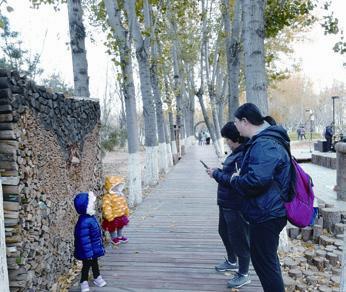
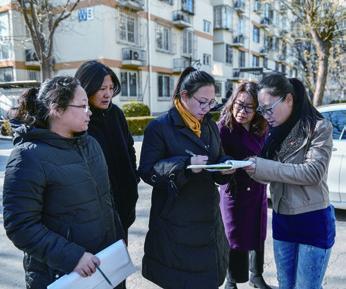
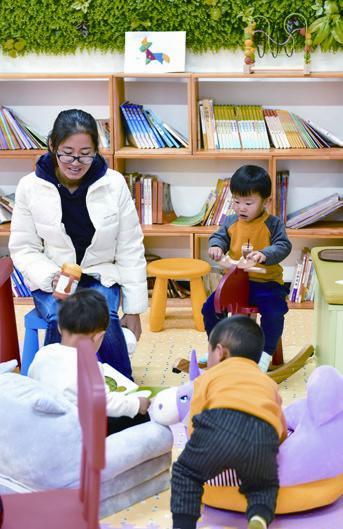
Although it was a little chilly after strong winds that swept much of the fall foliage away, Uncle Yao, a 71-year-old resident of Huilongguan in Beijings northern outskirts, still kept to his routine of playing the saxophone in a neighborhood park accompanied by several other seniors playing either the saxophone or the flute.
The Huilongguan Sport and Cultural Park was buzzing with activities, with grannies trailing after their toddling grandchildren, joggers running along a winding green synthetic track, dancers spinning and swirling on a circular terrace surrounded by trees, singers indulging in their own tunes and people playing various ball games.
“The park looks much prettier than before. More varieties of trees were planted, gently sloping mounds were created, decorative structures were built and sports facilities were added,” he told Beijing Review, adding that he moved to the neighborhood from downtown Beijing in 2003.
A people-oriented plan
The park is being renovated under the Huitian Plan, an action plan for optimizing and upgrading public services and infrastructure in Tiantongyuan and Huilongguan areas from 2018 to 2020, Ji Sizheng, a staff member with the Changping District Development and Reform Commission (CDDRC), told Beijing Review. The plan was jointly released by the Beijing Municipal Government and the Changping District Government on August 16, 2018.
New facilities have been added or will be added to the park. The north section, which is now open, boasts tennis courts, a football field, a gateball field and basketball courts. The southern part, currently encircled by blue fences, is still under construction. It will feature facilities such as a swimming pool, badminton courts, two theaters, a public library and an underground parking lot.
Tiantongyuan and Huilongguan, also known as the Huitian areas, are two large residential neighborhoods under the jurisdiction of Changping, lying in the northeast and northwest part of Beijing, respectively. In the late 1990s and early 2000s, they were devel- oped from rural into urban residential areas to provide relatively more affordable housing for city dwellers.
With accelerated urbanization and the rapid development of the surrounding hitech areas, the population soared. As of the end of 2017, Huitian, covering approximately 63 square km, had about 860,000 permanent residents, according to the CDDRC. As the population grew denser, some problems became salient, including traffic congestion and lack of public service facilities such as schools, hospitals and cultural and sports facilities.
Both the Beijing and Changping governments attach great importance to the administration of Huitian, striving to build a governance model for large communities.
Cai Qi, Secretary of the Beijing Municipal Committee of the Communist Party of China (CPC), has inspected the areas a number of times. On November 5, while visiting the Huilongguan Sport and Cultural Park and other facilities, he stressed that it is necessary to study and implement the decisions of the Fourth Plenary Session of the 19th CPC Central Committee and strive to build the areas into a model for the governance of large-scale community, where the public can participate in community governance and share the common fruits.
The plenary session, held in late October, focused on advancing the modernization of Chinas governance system and capability.
The session underlined the importance of upholding and improving the livelihood system for protecting both urban and rural residents and working to meet peoples ever-increasing needs for a better life. It also highlighted the social governance system based on collaboration, participation and common interests, as well as maintaining social stability and defending national security.
The Huitian Plan was formulated to tackle major concerns. Under the plan, about 20 billion yuan ($2.85 billion) will be invested in three years to upgrade transportation, medical, educational, cultural and sports facilities and senior care institutions. In addition, the plan aims to enhance the management of public ser-vices by strengthening community-level Party organizations and promoting public participation and rule of law in community governance.
Improved infrastructure
Along with the park, the Huitian Plan includes 108 projects, with 28 completed in 2018, and another 29 to be finished by the end of the year, according to the CDDRC.
A bicycle-only road connecting Huilongguan and the Shangdi business area, which has a high concentration of hitech firms, was put into use at the end of May. The road has two green lanes and an orange lane in the middle serving as a tidal lane.
The 6.3-km road is the first of its kind in the capital. About 11,600 people, or 13.8 percent of Huilongguans working population, commute between Huilongguan and Shangdi, a suitable distance for cycling, Wang Shuling, a senior engineer with the Beijing Transport Institute, said.
Regular roads between the two areas are congested and subways are very crowded. Cheng Shukun, an employee with the Baidu Group, which is located very close to the Shangdi end of the bicycle-only road, opts to bike to work. He gave a thumbs-up to the road, saying, “It used to take me an hour to drive to work, but now it takes me only half an hour to cycle to work. Its so convenient!”
In addition to the bicycle-only road, other measures have been implemented to improve traffic networks, including turning dead-end roads into thoroughfares, renovating bridges, opening fast traffic lanes connected to central urban areas, building traffic hubs and expanding public transport capacity, according to the Changping local government.
Aside from transportation bottlenecks, another major problem that the Huitian Plan addresses is the lack of affordable pre-school education services and quality schools to provide compulsory education.
In order to provide their children with better education, some parents have given up their bigger apartments and moved into smaller ones in other districts such as Haidian or Xicheng. Under the Huitian Plan, 15 new schools will be built in the areas, including a primary school and a middle school affiliated with top schools, according to the CDDRC.

A quality primary school was put into operation this fall. Since last year, 10 private kindergartens in the areas have either been turned into government-owned institutions or received government subsidies so that they can slash tuition significantly to make pre-school education more affordable.
Projects to expand medical services, as well as improve the capacity of water supply, sewage treatment and flood prevention have also been carried out.
Co-governance model
The Huitian Plan is about more than improving infrastructure; it also promotes a five-party co-governance model for communities.
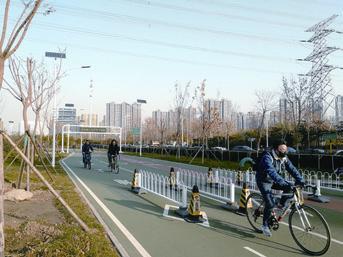
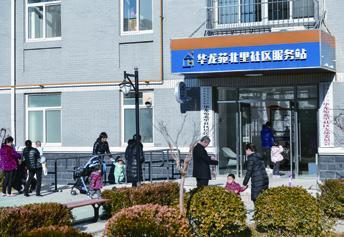
The five parties refer to the communitylevel CPC branch, the residents committee, the homeowners association, the property management company and social organizations, with the CPC branch playing a leading role, Wang Cuijuan, Secretary of the CPC branch and head of the residents committee of Hualongyuanbeili, a community of some 3,300 permanent residents living in 13 buildings in Huitian, told Beijing Review.
In China, a residents committee is a community-level self-governance body, which acts as a bridge between a subdistrict government and residents, and handles affairs such as resolving disputes, maintaining safety and providing public services. Members of a homeowners association are elected property owners in a residential compound that can represent residents in signing contracts with property management companies, among other things.
The five-party co-governance model has been followed by communities in Huitian including Hualongyuanbeili.
“The five parties in our community hold joint monthly meetings, where major issues are discussed,” Wang said. Residents opinions are collected regularly with the help of 56 building unit managers, who are liaisons between the residents committee and their respective unit. Issues reported by residents are carefully logged in notebooks, and are discussed when necessary at five-party meetings and addressed accordingly, Wang said, showing several well-kept notebooks in her office.
In her community, one problem solved through the five-party co-governance mechanism was the replacement of the outdated building access control system. When the old system broke down, the Party branch convened a meeting attended by the four other parties to discuss the issue. Then a new access system was purchased with the communitys revenue from leasing parking spaces and advertisement space.
Another issue resolved through the consultations was building several charging stations for electric bicycles. The question arose as to who should pay for them. The issue was brought to the five-party meeting, and eventually it was agreed that the cost would be covered by the community CPC branch.
“With a good working mechanism, things are easier to handle,” said Wang.
Vibrant social organizations
Social organizations not only participate in community decision-making, but also play a role in public goods provision.
A brief introduction to volunteer groups in the community and photos of their activities are displayed on the walls in the corridors of the three-story office building of the Hualongyuanbeili ResidentsCommittee.
One faded photo shows Wang and two other women standing beside their respective cars parked one after another. Wang explained that was a volunteer car fleet she initiated years ago. Back then, roads near the community were unpaved and public transportation was not well developed, while not many families in the community owned cars. So she organized the carpool group. Today, the car fleet still offers free rides to senior citizens.
In the same building, there is an activity room for toddlers. Bookshelves with picture books line a wall and the floor is covered with colorful soft cushions. Several toddlers accompanied by their caretakers were busy enjoying themselves. Wang said the service is offered for free by a community social group.
In a cultural activity room, a dozen or so elderly women were practicing waist drum dancing under the instruction of their volunteer teacher Kang Lanxiang. The team often performs for the public during festivals. Kang said teaching the waist drum dance makes her retired life more fulfilling. There are five such volunteer art teams in the community, with more than 100 volunteer performers.
The Changping government encourages social organizations and private enterprises to provide social services to meet the diverse needs of residents, and purchases services from them. Last year, the district government set up a social organization development service center in Huitian to incubate non-profit organizations and private enterprises, and established a fund to nurture such entities.
Zhang Duo, head of the service center, said social enterprises have taken root in Huitian, and have broad development space.“In the future, they will play an increasingly important role in solving various problems in Huitian, bringing new changes to social governance,” Zhang said.
These changes have delighted residents like Zuo Zhaohui, who has resided in Huilongguan for 18 years. He said the Huitian Plan has boosted his confidence and sense of belonging to the neighborhood, whereas in the past, he refrained from telling people that he lived there for fear that others would look down on him for living in a “sleeping town” with few amenities.
“Huilongguan used to be a sleeping town, but now it has awakened,” Wang said.


